Rico Nasol Former Executive At Zappos And Netflix On Leadership And Management
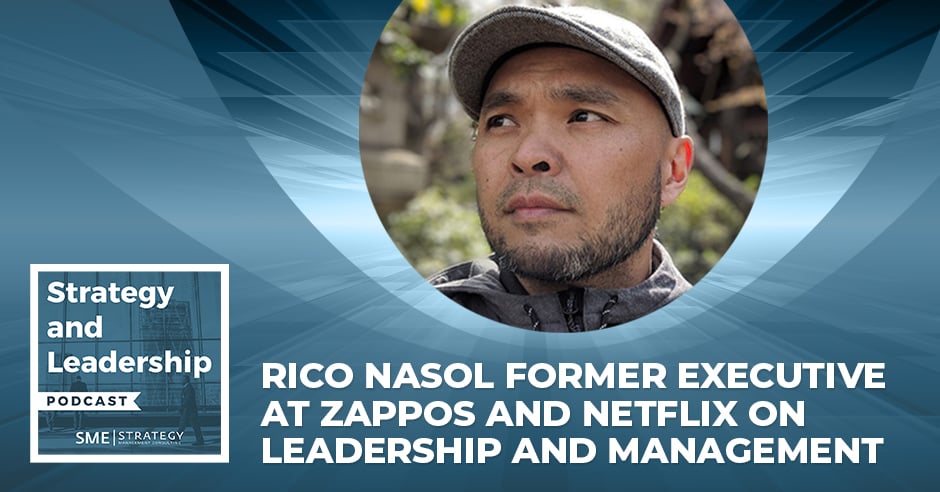
Leadership is not only about guiding teams but also about creating a culture that promotes creativity, empathy, and respect for each individual's story. In this episode, we have Rico Nasol, former executive at Zappos and Netflix, talk about leadership and management. From Zappos’ familial culture to Netflix’s “All-Star team” approach, Rico sheds light on the distinct cultures and their impact on personal growth within the organizations. He reveals the secrets behind building and managing creative teams, explaining the essence of innovation within constraints. Rico also touches on the crucial role of mental and emotional well-being in the workplace, advocating for a human-centric approach to leadership. He promotes habits that promote a good balance between work and personal life and that help team members. Tune in now!
Listen on Spotify: https://open.spotify.com/episode/4kQX0Z60LpoN4ZVI95WZ9S?si=a1fe98c54e1048eb
Listen on Apple Podcasts: https://podcasts.apple.com/ca/podcast/rico-nasol-former-executive-at-zappos-and-netflix-on/id1202449526?i=1000637417637
---
Watch the episode here
Listen to the podcast here
Rico Nasol Former Executive At Zappos And Netflix On Leadership And Management
My guest in this episode is Rico Nasol. He is a creative executive turned leadership coach with some organizations. You might have heard of Netflix for one, Zappos for another, and a couple of other very cool organizations. So far in our interaction, he has been a genuine and heart-centered person. I'm sure he's got lots of skills to boot. Rico, thanks for being here on the show. I'm grateful to chat with you.
Thanks, Anthony, for having me. I appreciate it. I love the show. I'm excited to have this conversation.
I appreciate it. I butchered your bio. I thought it would go a little bit smoother, but there are so many cool things that you've done. Why don't you tell our readers a little bit about the many years of experience you bring to the table and then we'll go from there?
It goes back to high school. I'm a creative at heart. I used to record videos, take two VCRs, and put them together. I edit my own videos. It tells you how long I've been in the creative world, but I cut my teeth at Zappos. It was a first real job. I had jobs out of high school and stuff like that, but that was the first real job I had. I was employee number 40 there. It was probably the first time I was in an organization that empowered me. One of my mentors there is Tony Hsieh.
I was there early. I established the creative and content team there. It was just me, but by the time I left, it was 165 people across Las Vegas and Kentucky. I had a few stops along the way. I got married. I moved back to California. In 2012, I started working on Netflix. They were making the transition from DVDs to streaming. They officially killed DVDs. I was there for almost nine years and it’s the same thing.
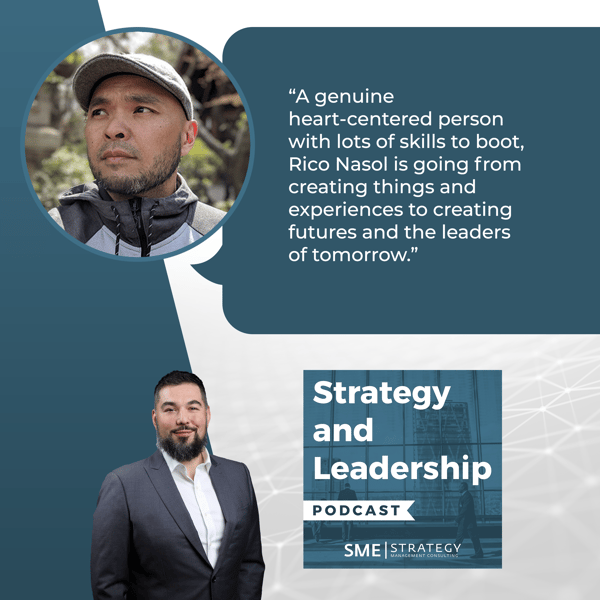
I was early on there in the streaming business and I built the Netflix creative studio from me. The person who hired me said, “I don't even know if your job was going to be there six months later,” because my whole job was an experiment. However, there I was nine years later with 135 people in seven countries and 300 vendors around the world doing some of the most amazing creative campaigns and assets that that I've seen. I've learned a lot along the way. That's the history I bring and I'd love to share more and more during this conversation.
I find it super neat, those bootleg origin for folks who are reading. If you're age-ish, you might have been coding on your Myspace wall and that's how you learn to code. You're chopping out VCR. You’re just figuring out how to do it. I think that informal learning is cool to translate into skills. At that time, nobody knew what they needed because everything is brand new. It's not like you had the ten years' experience. It's like, “I'm just been doing that. I guess I could do it.”
Another one that I think is also cool is you came into Zappos early and built that. You built remote teams, and then in Netflix, it was a new job and a new role, and you built a remote team, but all of it I bet on the back of creativity. My first question is what are the keys to growing, scaling, and building a creative organization or a creative team?
A lot of people think innovation is blue sky. From my perspective, creativity is born out of constraint. That's what my whole career was based on because I had to figure out how to scale these things. The thing I'm best known for at Zappos was video descriptions. At the time, it was 2006 or 2007, YouTube was starting to become a thing. It wasn't quite a thing yet. Tony was like, “How can we continue to put the product in people's hands?”
A lot of people think innovation is a blue sky and creativity is born on a constraint.
I was like, “We did multi-view, we did that stuff.” There's nobody around to show us these things because nobody was using video in eCommerce, so he asked me and challenged me to figure it out. I messed around with the camera and grab the camera. I got some employees. I’m like, “I want to shoot you talking about the product.” We did 100 of those and we ran a test. We found out that there was up to a 40% increase in conversion from the 100 that we shot. We're like, “This has some legs. We bootstrap this, but now how can we scale this?” At the time, agencies were like, “We can pay you $500 to shoot each video.” We're like, “You're crazy. We don't have that kind of resource. That's expensive.”
What I did is I went to our warehouse in Kentucky. I plugged the camera into a computer and had the employees talk about the products, and we're making them for $20 a video. That's where I learned to lead, scale, and focus on creativity first and why it's important in building teams. The constraints that you have, how can you make this all work with unlimited resources? There's always a way. Creativity is like water. Water will always find a way. If you're not given what you need, you'll figure out a way to make it work.
We had a podcast called on The Perfection Paradox that you want everything to be perfect. In those organizations that are moving fast, are trying to solve a problem, and have the constraints, you don't have the perfection, but what was also probably freeing at the time is because it was so new that you didn't have a baseline to compare it so that you can be like, “It has to be overly engineered and it has to be produced.”
I've been YouTubing since 2016. I get 30,000 followers, but my videos are far from pretty, but the point is not to make it pretty. It’s like, “What's the outcome that we're trying to solve for? Let's make this happen.” How important is having clear outcomes to the creative process and then how do you give yourself the permission to get it wrong? It’s because creativity is so subjective, but then people put those standards based on multi-million dollar budgets. How do you mentally free yourself of those constraints?
I've been lucky enough to work for folks, especially at Zappos and Netflix that let us have creative freedom. Not everywhere I've been allowed us to do that. It took me a long time because I have an Imposter syndrome. I listened to the perfectionist and I want to have a comment there. For a long time, I thought that quality had to be the highest, but now my mantra is don't let perfect be the enemy of good.
Now, even with the folks I coach, it’s like, “Messy action is better than no action.” If you wait for everything to be perfect, which we know doesn't exist, you're never going to take the action and make the moves that you want to make. For me, how my Imposter syndrome used to show up was everything needed to be perfect. It need the right time. It need to be the right quality. It need to be the right this and that.
I had to work through those things and find that if I didn't take this action, then I went and learn. Learning is the most important thing because if you're not learning, then you're not growing. We get into this mindset at some tech places of incrementality. Let's make it a half-step better and a half-step better. My perspective is, “Let's take 50 steps. If that's too far, let's come back,” instead of taking half –steps.
If you take a half-step towards the wall, you'll never get to the wall, but if you go for it and you go as far as you can on the edges, then you know where the edges are and you work your way back. That's the same thing with creativity. At Netflix, people thought that with trailers and images, they have to be the highest quality. They have to be Hollywood quality.
We've created some of the rawest assets that were stills taken from the movie itself or the show itself. We blow it up to posters and they were the most popular posters than Netflix has ever done. Quality, to your point, is subjective. There are so many more things that go into quality. There's authenticity. There's intentionality. There's context. There's targeted audience. None of that hits subjectivity. All of that is measurable and functional.
That's so funny that you say that because we've gone through the process of updating and changing our graphics. I had marketing consultants and stuff like that. I've updated them. I'm like, “This is too pretty.” People are smart now. If it looks too good, they know they're being sold. There's an element of grittiness to it. I find it fascinating from my perspective the amount of A/B testing that goes into the images that make you think like, “What drives people?”
Sharing a face and having that face be expressive, it's the thing that drives that. Let me ask. You went into two incredible organizations. A couple of years ago, they were the gold standard. You had great leadership and presumably a great mentorship in there. Can you compare and contrast how these organizations did things differently?
Also, how did that different environment impact you as an individual and support your own growth? I'll say I ask because as leaders and readers, you probably only see your organization. You don't see other organizations. Being able to have those pros and cons of each is a good lesson for people to learn, “What can you like? What can you steal? What can you incorporate? What can you remove?”
That's a great question because people would ask me all the time in Netflix, “How was it working in Zappos?” As a caveat, there are places I worked in between, and those are the places I knew what cultures I didn't want to be in. I mentioned a lot about Zappos and Netflix. If you go find me on LinkedIn, there are companies in there that wasn't fit for me.
The thing I loved about Zappos and was the right place and the right time for me is it was very based in family. The late Tony Hsieh is a first generation Asian-American. He's the first CEO. I related a lot to him. It's funny because sometimes in our one-on-ones, I didn't know who was more nervous me or him because I’m like, “I'm talking to the CEO.” He's very introverted also, but it was very family-oriented there.
Everything we did, we did together. We did it like a family. If you treated everybody else like family, you had the ultimate trust because you trust your brother, sister, and your parents. Everybody there had a sense of trust because they have that familial bond. We did everything together. That had its pros and cons. Some of the pros is you build relationships across the whole company.
The cons were sometimes they were too close and having the professional relationship became difficult, having the feedback, reviews, and letting people go. It made it that much harder. However, it was the right place for me. It was very empowering. They were really true to the values that they have. Now, I'll compare that to Netflix. Don't take this wrong way. The way I explain it folks is that if the Zappos culture at that time when I was there, if it grew up, it was 40 years old.
Netflix is more focused on the all-star team. It's not family anymore. It's the all-star team. We collect the best people in the best roles for these jobs, but we don't bring in any brilliant jerks. That's where it feels like Zappos. The no-brilliant jerks is important because people can be smart, but if they're going to be jerks or mean about it, you won't want to work for them.
People can be smart. But if they're going to be jerks and mean about it, you won't want to work for them.
That was the biggest difference between the two, but they were both meritocracies. They're both based on the impact that you have. For better or worse, Netflix has an infamous or famous culture, which when you're in it, I truly understand it but it's hard to explain when you're on the outside looking in. For example, there's this thing called the Keeper Test that we have. Everybody thinks, “You're looking to fire your underperformers every week.”
That's not how it manifested. It was more like once a year during review time, I would look at my team and say, “If I had to build this team again, would I hire the same people?” If there was some infringed or no, it's not like, “I'm going to fire them.” It's, “How can I find the right role for them?” Maybe it's not on my team. Maybe it’s in another team, but they still have value. Where can I realign that value? Those are both great cultures and both super supportive. I had great experiences in both. That's why I was there for so long at both companies.
From what Zappos was able to accomplish and is accomplishing and what Netflix is still pushing forward on, culture is at the heart of it. The processes are at the heart of it, but what's important is that every organization has their way of doing things. You have both incredibly successful organizations that went at it in a totally different way and some might say opposed.
What I think is neat for you is it's suited where you were at the time and it supported that next level of growth. At the same time in your journey, you found what wasn't a fit for you skill-wise or work-wise. It might have been there, culture or not. For our readers, you say, “How are we fostering both the skill and the culture? Also, making sure that we have the right people so that we can deliver our outcomes.”
Let me ask you. You've got many years of experience. You've been doing a lot of stuff here. In your professional career, what is bringing you joy professionally through the work and what is bringing you joy personally or professionally? What are the hobby things that you do if you're not burning VCRs anymore, but you're making other creative things? What are you doing for fun in the professional realm? Also, what occupies most of your time now?
It's good to talk about my transition story. The reason why I decided to leave Netflix when I did is although it's an amazing company, it has its demands. As I said, I had a team of 135. They're in seven countries. I was up early in the morning with Amsterdam. I was up late at night with Singapore and Mumbai. It was crazy and I have two young kids. I had to make a decision for myself of, “Do I want to continue to work this amazing job with these crazy hours or do I want to take a step back and focus on my family?”
I took a step back. I focused on my family. I found that I was leading into more of the mentorship coaching of my role at Netflix. In building that team, I had directors that reported to me. I had to coach them through Imposter syndrome and stuff like that. I had this realization that I love coaching. My mindset was, “Yes, I'm going from creating things and experiences to creating futures and creating the leaders of tomorrow.” That's how I still get my creative juices out. Whether it's coaching or it's corporate life, it's using creativity to solve problems. That's all it is.
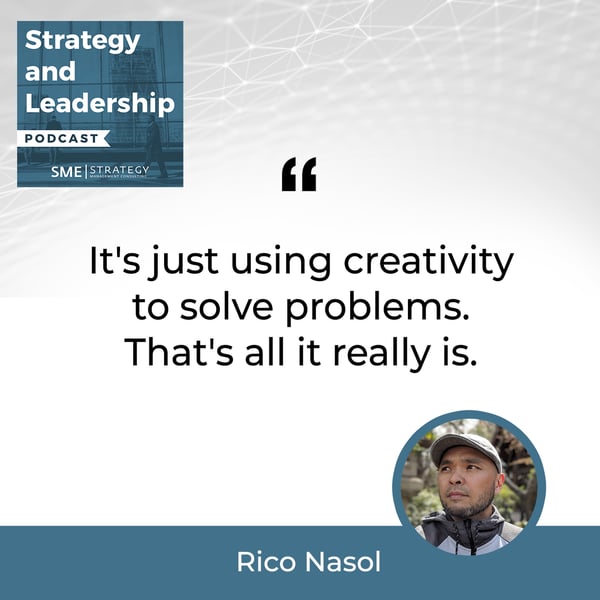
It was easy for me to transition into that. Now, I have more flexibility with my kids, but now I get to help other people discover their superpowers and create their futures. The thing I focus on is you can't be a head-centered leader or a heart-centered leader. You have to have both because if you're going to inspire people, you need to be heart-centered, but if you also want to tie that to a strong why and the ability to show impact, then you need to be head-centered.
That's what I have seen in a lot of organizations. Some are like data and data, almost to a fault and they're like, “We don't need the touchy-feely stuff now. We're data-centered.” Some people lean too far into heart-centered where it's like all family and they're not willing to make some of the hard decisions that they need to make.
As you are leading this organization of 130 to 140 people and making sure that they were able to manage their mental, spiritual, and heart-mind balance, now, you're doing that with individuals. What do people need to consider? How do they find the balance for them if that's what they want to do?
It's about modeling the behavior you want to see. I had to create boundaries for myself so folks could feel safe about creating boundaries for themselves. I would take off days to go to appointments and normalize balance. Since my organization was so big, every Friday I used to do this. I used to send an email specifically when the pandemic started and share the struggles that I was going through.
It's really about modeling the behavior you want to see.
One woman will be like, “My kids are struggling with the pandemic. My daughter is falling behind. My son's only two so I don't know what to do.” I would share these things with my team. At first, I'm like, “No one's going to read this or respond,” but sure enough, every time people will respond, “Thank you for sharing.” They either give me tips or they’ll shared the things that they're struggling with.
We humanized everything in a way that made people feel seen and made it feel like it was okay for them to be vulnerable and to take time off when they needed to just to do the things they needed to do to make sure their families and mental health was okay. The work will always be there. We'll figure the work out, but if they're not healthy, they can't do the work anyway.
It sounds like the values of Tony live on in you, which hopefully is a big compliment to you and to him because I know that he compliment a lot to people. Also, that you're able to find for yourself a great way to support 100-plus people in a challenging time professionally and personally. That was an interesting time where the line between work and home dissolved. Also, the people side of it became clear. I don't think that it's going to go away. As leaders, the more effectively you can understand that you're hiring humans that have lives not just like robots that work, you'll be more successful in those type of organizations. They'll be more sustainable. They'll stick around longer.
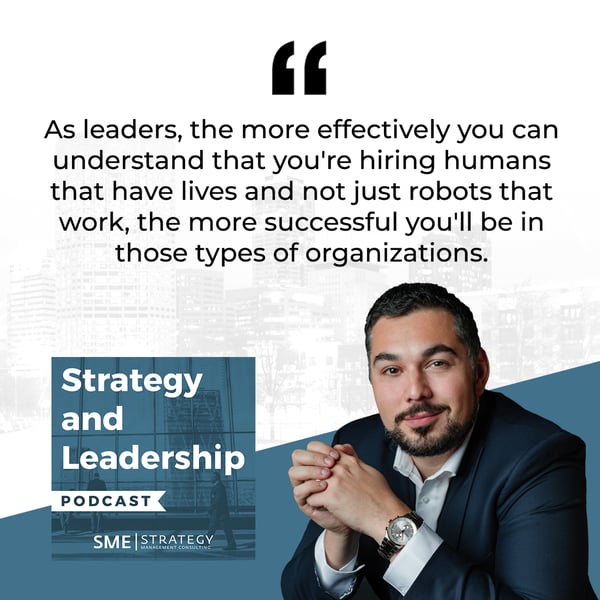
You're the evidence of it. It’s that those organizations that fit, you were there for seven-plus years and had a huge contribution. If you didn't fit, you became a cost. You turned over. It costs you productivity. It costs them productivity. It was a lose-lose. That heart-centered and head-centered approach and being communicative about your values makes a big difference. There's a big business upside to it. Is there anything you want to add on that, Rico?
There are a couple of things I like to add because that was well-put. Thanks for summarizing that. I had one of the lowest churn rates too. I’m at 3% churn rate over the nine years I was there. That included voluntary and involuntary. To your point about the attrition, there are three things that I'd like to ask leaders that are out there that maybe don't think in these ways, especially when it comes to ROI, cost, and retention.
Three questions that I would ask for people is, “What could they make somewhere else? What would you pay to keep them? How much would it cost to replace them?” When people start to penny-pinch and say, “We can't afford to keep this person. We'll just hire cheaper,” I’m like, “Is that true?” It’s because if it if they've been here for three years, they have so much domain knowledge.
How much is it going to cost in lost work to train somebody new? When people are making these decisions, there are more to consider than just a bottom line. There's also, “What's the long-term effects of making these decisions not only on that person but also the team morale?” If you see folks around you and it's not great, it's going to affect the team morale.
What was the process that you use at Netflix for that?
That's the Keeper Test. The three questions that I that I introduced was a way we calculated comp. Whenever we're coming around comp time, “What is the market saying? What would I pay to keep this person? If I had to hire new, how much would it cost me to replace?” Most of the time, the cost to replace and what could they get was much higher. I'm like, “This is what I paid to keep them because they they're so valuable to the team.” I'd usually pay more to keep them because I knew the value was there and the long term value was better.
I see that a lot of people are struggling with talent attraction. They're focused, at least from what I see, on the coming in and they don't put a lot of emphasis on the sticking around. If you have a hole in the bottom of your bucket, it’s going to cost you more and more money. It is building the Kepeer Test and recognizing it as a foreshadowing to that because they say, “How do I support this person not just as a resource but as a human being? It’s because if they're under performing in my team, maybe they can over perform somewhere else.” Rico, it's been such a pleasure. Where can people connect with you? Where can they learn more about what you're up to and just tap in?
I'm on LinkedIn at Rico Nasol. I'm also on Instagram @RicoNasol. You can find me at RicoNasol.com. I'd be happy to chat. I'm here if anybody needs anything. It was great catching up with you, Anthony. Thanks for having me.
It’s my pleasure, Rico. Thank you so much for joining me. My guest, Rico Nasol, is a leadership coach. You heard a lot of background and some cool organizations. It's important that if you're looking for a leadership coach or if you're looking for somebody to support you, it's finding that right fit, somebody who can take their experience in their career and elevate you, especially if you're leading teams and if you're trying to work in constraints, which I think all of us are. Rico is your man. I will give him a plug. He is a dope guy. I will say on the backend as a guest, he is extremely prepared. Rico, thanks. I appreciate it. I'm glad that we got the chat, connect, and all that stuff. I wish you nothing but the best moving forward.
Thank you. The same goes for you. Thanks, Anthony.
Thanks for reading. Thanks for being here. Thanks for subscribing. I'll see you next episode.
Important Links
- Rico Nasol
- @RicoNasol – Instagram
- https://www.LinkedIn.com/in/riconasol
- https://www.RicoNasol.com/leaders
About Rico Nasol
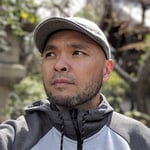
Meet Rico Nasol, a seasoned leader with over 18 years of global experience, who rose from humble beginnings to make a profound impact at Zappos and Netflix. During his remarkable journey, Rico, a devoted husband since 2010 and a father of two, played a pivotal role in pioneering the Netflix Creative Studio.
Today, Rico offers a transformative 90-day program that draws from his own experiences, both successes and setbacks. He firmly believes that exceptional leadership is within everyone's reach, given the right mindset and skills. Rico's heart-centered approach emphasizes the importance of people, cultivating engagement and productivity.
Join Rico in redefining leadership and creating workplaces where balance and engagement flourish. Explore his program to unlock your leadership potential and chart a path to success.


